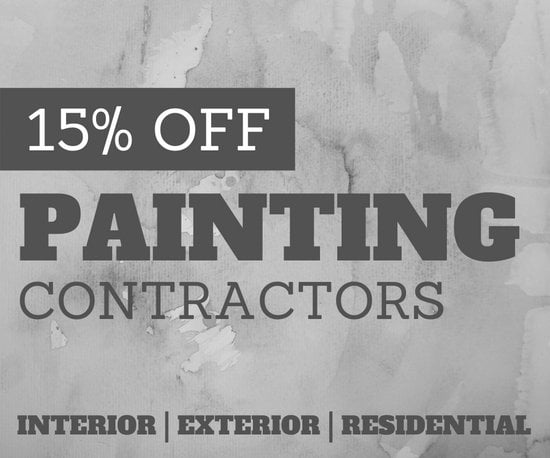Discover The Impact Of Seasonal Elements On The Efficiency Of Commercial Exterior Paint And Determine The Optimum Times To Attain Long-Lasting Results For Your Project
Discover The Impact Of Seasonal Elements On The Efficiency Of Commercial Exterior Paint And Determine The Optimum Times To Attain Long-Lasting Results For Your Project
Blog Article
Article Composed By-McLamb Skafte
When you're planning an industrial outside paint job, seasonal elements can make or damage your results. You'll intend to take into consideration exactly how temperature and moisture impact paint application and drying times. Picking the right season can guarantee your paint adheres appropriately and lasts much longer. Yet which periods are absolutely the most effective for this sort of work? Let's discover exterior painting services that can impact your job's success.
The Impact of Temperature Level on Paint Application
When you're planning an industrial outside painting job, the temperature level can substantially affect just how well the paint adheres and dries.
Preferably, you intend to repaint when temperature levels vary in between 50 ° F and 85 ° F. If it's also chilly, the paint may not heal appropriately, causing concerns like peeling or cracking.
On the other side, if it's as well warm, the paint can dry too quickly, stopping correct adhesion and causing an uneven coating.
You must likewise think about the moment of day; morning or late afternoon offers cooler temperature levels, which can be extra desirable.
Constantly examine the supplier's recommendations for the particular paint you're using, as they typically give guidance on the suitable temperature level range for ideal results.
Moisture and Its Impact on Drying Times
Temperature isn't the only environmental variable that affects your commercial outside painting job; moisture plays a significant duty too. High moisture degrees can reduce drying times significantly, affecting the general top quality of your paint work.
When the air is filled with wetness, the paint takes longer to cure, which can cause problems like poor bond and a greater danger of mold development. If you're painting on a specifically damp day, be planned for extended delay times between layers.
It's essential to keep an eye on regional climate condition and plan appropriately. Ideally, aim for moisture degrees between 40% and 70% for ideal drying out.
Keeping these consider mind guarantees your task stays on track and delivers an enduring surface.
Best Seasons for Commercial Outside Painting Projects
What's the best season for your industrial external paint jobs?
Springtime and very early fall are normally your best options. Throughout these seasons, temperature levels are moderate, and moisture degrees are usually reduced, creating excellent conditions for paint application and drying out.
Avoid summer season's intense heat, which can trigger paint to dry also rapidly, causing bad adhesion and finish. Likewise, winter's chilly temperature levels can prevent proper drying and treating, running the risk of the longevity of your paint task.
painted house exteriors for days with temperature levels between 50 ° F and 85 ° F for ideal results. https://www.architecturaldigest.com/story/painted-ceilings-tips-tricks in mind to inspect the regional weather report for rainfall, as wet problems can spoil your job.
Preparation around these elements guarantees your painting job runs smoothly and lasts much longer.
Verdict
To conclude, intending your industrial external painting projects around seasonal considerations can make a substantial difference in the result. By https://professional-exterior-hou56543.ageeksblog.com/33191288/developing-the-problems-for-an-effective-paint-work-starts-with-a-vital-element-that-is-typically-overlooked-and-it-can-profoundly-impact-the-total-end-result throughout the perfect temperature levels and humidity levels, you'll guarantee better bond and drying times. Keep in mind to watch on regional weather forecasts and choose the right time of year-- springtime and very early autumn are your best options. Taking these steps will help you achieve a sturdy and specialist surface that lasts.
